Psoriasis is a chronic skin disease of non-infectious origin. According to statistics, 3, 7% of the world's population suffer from psoriasis. People call the disease "psoriasis".
Psoriasis does not depend on gender, is not contagious; most commonly develops between the ages of 14-27 years. The disease is characterized by the appearance of red scaling in the form of a plaque (spot) covered with white scales. A spot (or multiple spots) can be on any part of the body, but most often in places with thin and dry skin: elbows, knees, lower back, scalp.
The spots are of different sizes and bothersome in different ways: in some patients only skin irritation is noticed; in other patients, large areas of the skin are affected, which is associated with discomfort, itching, pain, insomnia and impaired quality of life.
Psoriasis is a chronic disease characterized by periods of exacerbations (rashes) and remission (symptoms subsiding).
Psoriasis often makes pregnancy difficult.
Causes of Psoriasis
Psoriasis is a systemic process that affects not just the skin but the entire body. The causes of psoriasis are not fully understood, but it is believed that there are several: neurogenic (from stress), hereditary, infectious, viral, mixed (skin damage with the penetration of staphylococci in combination with any of the above reasons), etc. InIn this case, the cellular and humoral immunity is activated and an autoimmune process of cell damage, especially the skin cells (epidermis), is triggered.
In addition to activating immunity, the metabolism is disrupted. The disease is exacerbated by a burdened inheritance. As a result, the renewal (regeneration) of the cells is accelerated 3-5 times - psoriasis plaques form on the skin.
Without timely treatment, the lesion is aggravated: patches of skin grow, crack, fester; Nails are destroyed, joints are affected, etc.
80% of the quality of life of a patient with psoriasis depends on timely diagnosis and the right treatment.
We list again the factors that contribute to the onset of the disease:
- bad inheritance. Scientists have identified 9 genes that determine the development of the disease, but their interaction is not clear. It is well known that 15% of psoriasis is inherited from 1st and 2nd generation relatives;
- Stress, nervous tension, depression. It has been shown that stress exacerbates psoriasis 70% of the time;
- hormonal imbalance;
- Dysbiosis;
- Metabolic disorders, drug addiction;
- Colitis and parasitic infections (roundworm, lamblia, intestinal infections, etc. );
- Viral infections;
- Streptoderma; Candidiasis of the skin;
- Allergies.
Psoriasis symptoms
In the early stages, psoriatic rashes are in the form of red plaques (spots) with scaly scales. The appearance of a skin plaque is accompanied by severe itching. There is a denser (keratinous) layer under the scales.
Here are the 6 main forms of psoriasis; each has its own symptoms:
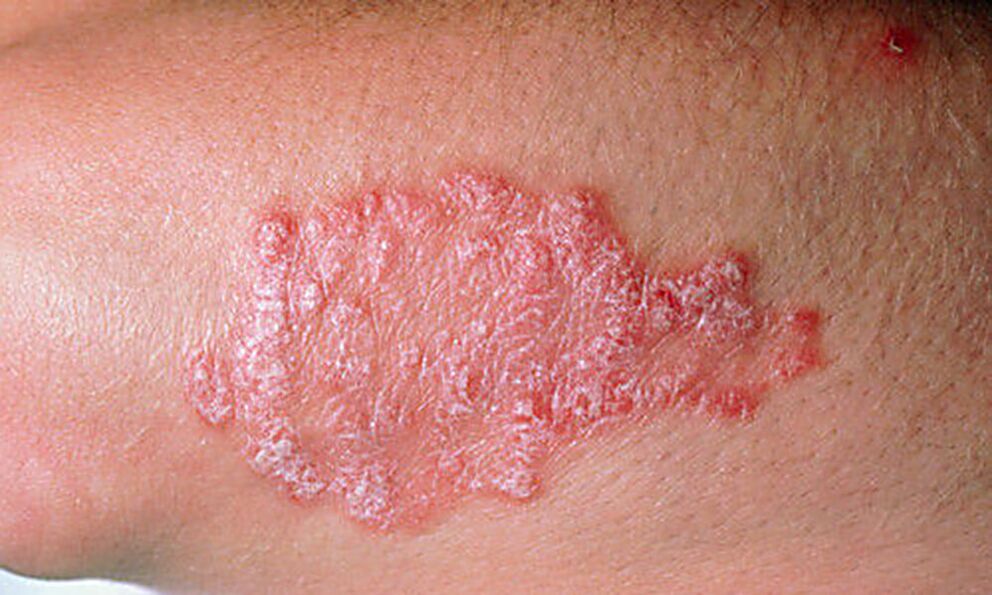
Plaque psoriasis occurs in 85% of patients. It is characterized by dry, pinkish rashes that protrude above the skin and are covered in silvery scales. The skin in the affected areas often peels off; this is where red spots remain, which bleed during the trauma. In 60% of cases, plaques fuse into large plates.
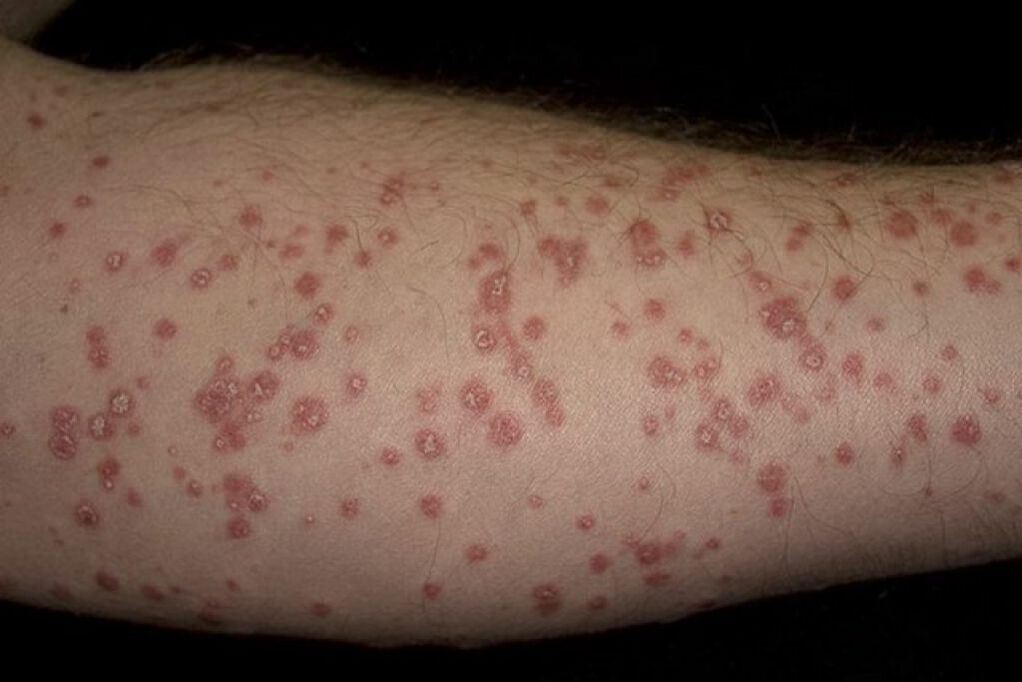
Guttate psoriasis is characterized by many small, dry lesions in the form of pink droplets that protrude above the surface of the skin. Rashes are localized on the thighs and legs and affect large areas of the body. In 60% of cases, guttate psoriasis worsens after a strep infection.
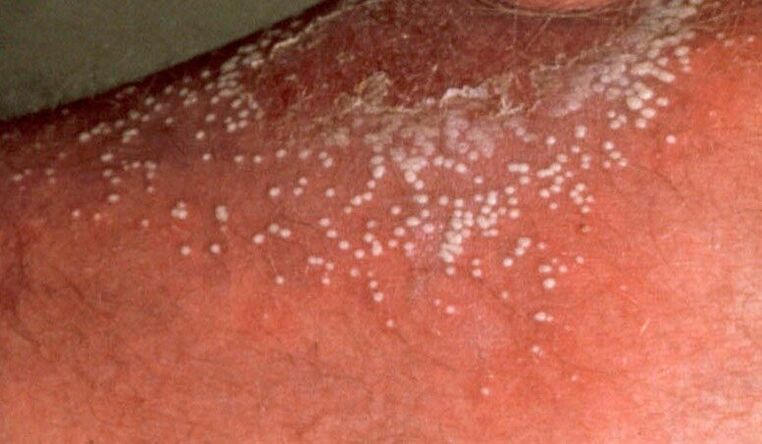
Pustular psoriasis can be recognized by skin vesicles that are filled with clear fluid. The vesicles are surrounded by reddened, edematous skin. The legs and thighs are more commonly affected.

Flexor psoriasis is manifested as smooth, non-scaly red spots that are located in the area of the folds of the skin: the lateral surface of the thighs, armpits, and the area of the external genitalia. Mechanical irritation (physiological friction) injures the spots, bleeds and festers.
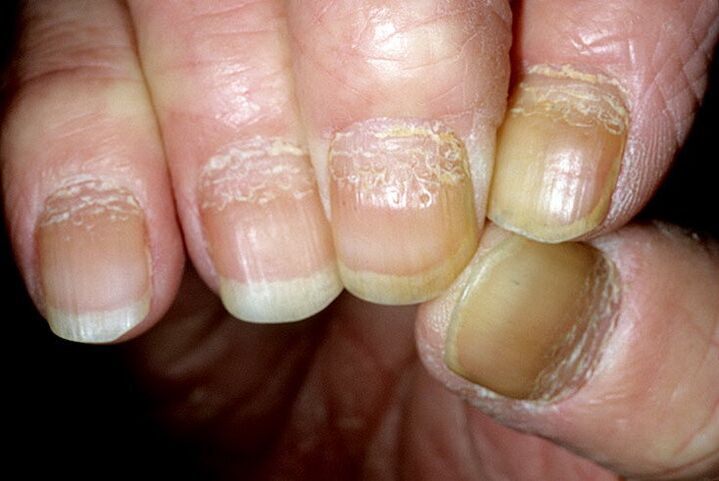
Psoriasis of the nails is manifested by discoloration, the appearance of spots and transverse lines on the nails. The skin around the lesion is hardened. As the disease progresses, the nail peels, thickens, and then dries up or falls off.
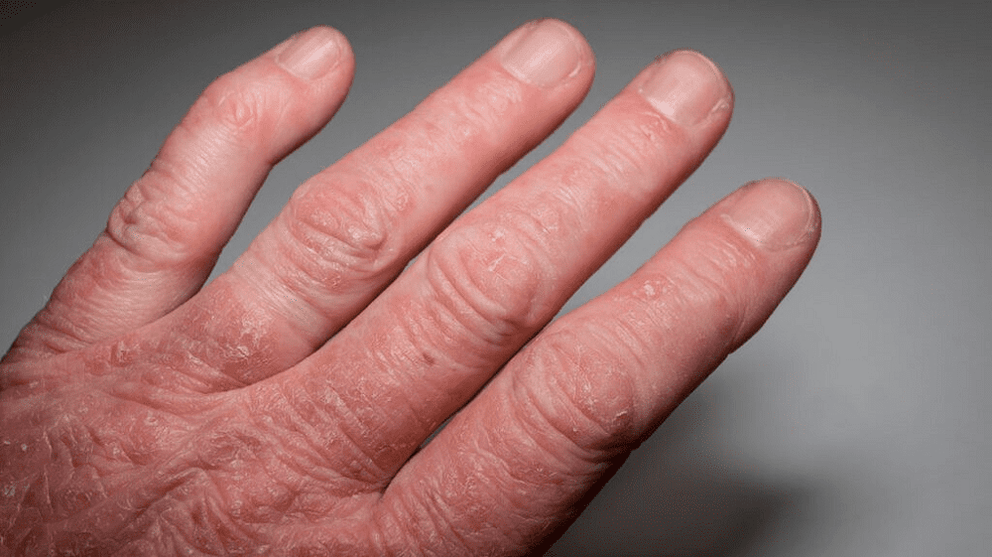
Psoriatic arthritis (15% of cases). All joints are affected, but more often the small ones - the phalanges of the hands and feet. The fingers become like sausages. Psoriasis of the joints leads to bursitis, handicapping a person.
Let's talk about lesions of the head and elbows separately.
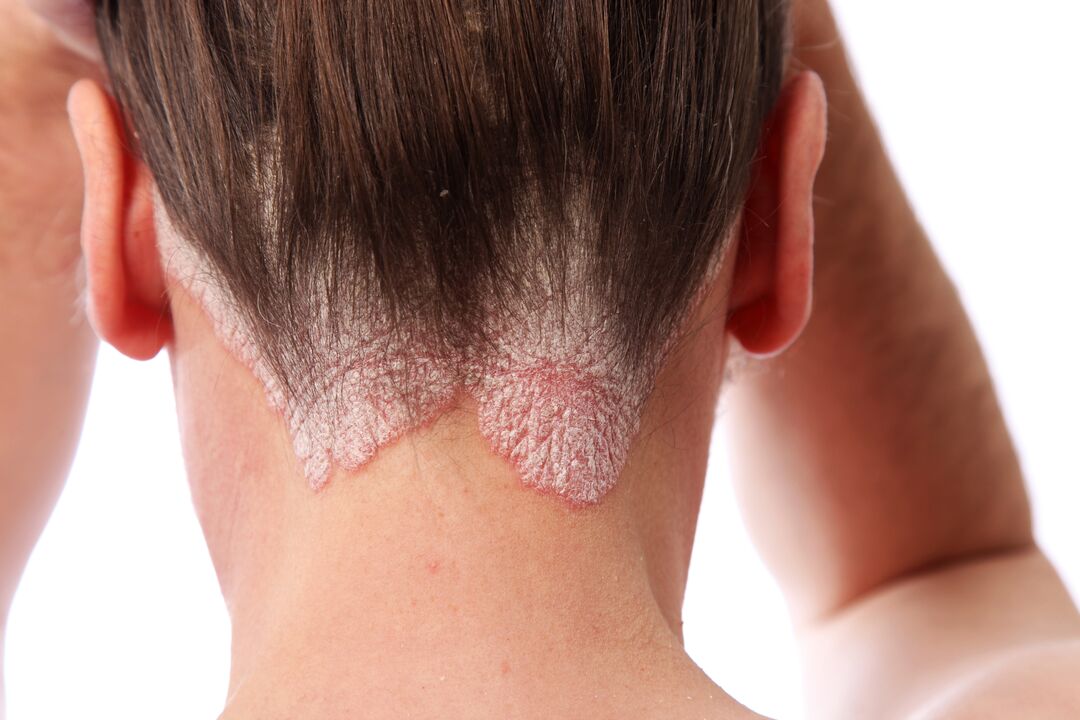
Scalp psoriasis (primarily of the scalp) is the most common form of the disease. It's more common at a young age. It manifests as red scaly patches that itch and itch. Redness is almost always noticeable, therefore causing emotional discomfort and leading to a person's social isolation.
Elbow psoriasis is a disease affecting middle-aged people. It manifests itself in the form of rashes on the extensor sides of the elbow joints. The rash spreads outward and merges - a large plaque (plaque) forms, covered with silvery, slightly sloping scales. Together with the scales, a thin protective film is peeled off, exposing the bleeding surface. 80% of the time, the spots go away on their own without treatment, but sometimes they thicken (get old) and persist for years, resulting in psoriatic lesions of the elbow joint.
Diagnosis of psoriasis
Diagnosis and treatment of psoriasis is carried out by a dermatovenerologist.
Diagnosing psoriasis is easy because of the characteristic skin changes. A general blood test and determination of rheumatoid factor are used as additional laboratory tests. To diagnose psoriatic arthritis, a consultation with a rheumatologist and an X-ray of the affected joints are indicated. In rare cases, a skin biopsy is performed for differential diagnosis.
Psoriasis should be distinguished from similar skin diseases: seborrhea, lupus, etc.
Psoriasis treatment
Psoriasis is a chronic disease with phases of exacerbation (recurrence of rashes) and remission (disappearance of rashes). It is impossible to recover from psoriasis forever. You can prolong remission and reduce the intensity of exacerbations.
Effective treatment can only be found immediately in 40% of cases. Sometimes it takes months and years. Therefore, with the exception of severe exacerbations and complications, psoriasis is treated at home. The effectiveness of the treatment is influenced by the type of psoriasis, age, comorbidities, etc. With a mild degree of psoriasis, topical preparations are prescribed: ointments and creams based on:
- Glucocorticosteroids;
- Zinc;
- Tar;
- Salicylic acid;
- Vitamin D3.
In severe cases of psoriasis (25% of the surface of the skin is affected, joint damage) and the ineffectiveness of local treatment, complex therapy is prescribed:
- Cytostatics that inhibit epidermal cell division;
- Immunomodulators that normalize immune responses;
- Glucocorticosteroids, which regulate metabolic processes and reduce inflammation;
- nonsteroidal anti-inflammatory drugs (to reduce skin itchiness);
- Multivitamins.
Physiotherapy is prescribed: ultraviolet radiation, cryotherapy, plasmapheresis, hirudotherapy. Folk remedies are also used: ointments based on celandine and lard, meadowsweet and petroleum jelly, beeswax and lard. To normalize immunity, they drink homemade kvass from oats, an infusion of bay leaves and a decoction of dill.
Diet, especially in psoriasis exacerbations, plays an important role. Spicy and sweet foods are excluded from the diet. Fast food and alcohol are prohibited. The diet should be balanced, rich in vitamins and minerals.
To prevent psoriasis from getting worse, you need to improve your health, avoid stress, hypothermia, and seasonal illnesses.
Here are the simple rules for preventing psoriasis exacerbations:
- do not overdry the skin;
- avoid prolonged exposure to the sun;
- Avoid skin injuries;
- Avoid stress;
- do not smoke or abuse alcohol.
Is psoriasis contagious?
There is not a single documented case of transmission of psoriasis from a sick person through household or other contact. Hence, it is believed that psoriasis is not contagious.
Which doctor should you contact?
To start timely treatment and avoid the spread of psoriasis, contact a dermatovenerologist. Consultation with a rheumatologist is indicated if psoriatic arthritis is present.

























